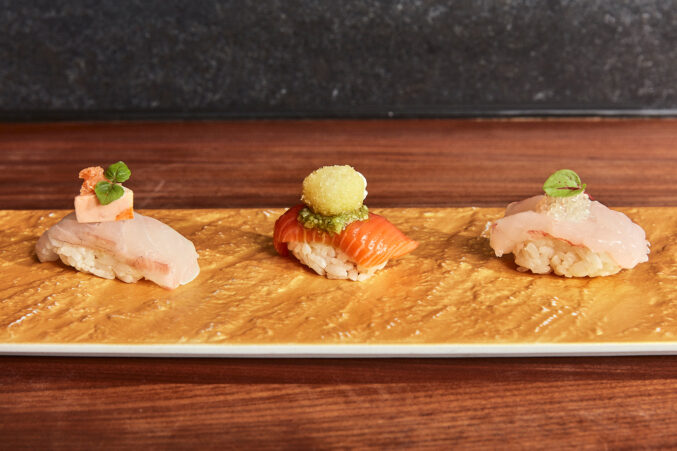For some reason, the word “decant” strikes fear and loathing into the hearts of neophyte wine buffs. I guess it sounds like one more pretentious put-on from the wine snobs.
But actually, decanting is a very essential and beneficial element of good wine care. In well-aged, mature wines, it is necessary to get rid of the natural accumulation of sediment at the bottom of the bottle. Although sediment has no taste, it does have a gritty texture on the palate and clouds up what should be a brilliant wine presence in the glass.
In young wines, decanting can help development and oxidation. Three or more hours of breathing in an open decanter will smooth the edges, release the aroma and generally improve an immature wine. In short, mature wine deserves decanting, youthful wine needs it.
Wine that is pasteurized and stoppered with a plastic cap can only be helped by a great advertising agency.
To decant properly, you need a good light, a good decanter and a steady hand. A candle is very romantic, but its flame may be inadequate. A high-intensity desk lamp is perfect for the job. A good wine decanter should have a wide, funnel-like opening to facilitate pouring without spilling.
Let’s assume the bottle of wine you are planning to decant has been correctly stored in a horizontal position, label up. A day ahead of time, pick up the bottle delicately and carry it to the spot where you plan to decant. Very slowly, without rotating, stand the bottle almost upright. Place a book or a thick magazine under the label side of the bottom, so the bottle leans like a miniature Tower of Pisa. This way, the sediment resting on the side of the bottle will slowly slide to one side of the punt and concentrate there, without forming a circle all the way around the punt.
When ready to decant, pull the cork using a good, familiar corkscrew with a spiral-type screw. Adjust the bottle angle and height of the light. Pick up the decanter with one hand holding it at an angle and, firmly holding your hand over the label, begin tilting the wine bottle toward the decanter. Rest the mouth of the bottle (sort of hang it) on the lip of the decanter and start pouring. The slower the better. At this point, you should align the center of the light source, your eyes and the bottom curve of the bottleneck. Do not watch the stream of wine, but concentrate on the shoulder of the bottleneck. Once you start pouring do not stop, not even to answer the telephone. When the sediment starts moving from the punt, it will show first as a delicate wisp of smoke halfway up the bottle. Let the smoke-sediment reach the base of the bottleneck, then stop pouring.
If the wine is special or precious, filter the remaining two or three ounces of muddy wine through a paper coffee filter into an extra wine glass. It will give you a chance to sneak a taste ahead of the others. A glass funnel can be used, especially if the decanter has a narrow opening.
A silver wine funnel with a built-in sieve is functional only for decanting old crusted Ports. The sieve will catch the flaky sediment characteristic of Port, but not the fine, powdery sediment of other red wines.
Decanting becomes really a problem when you are dealing with larger-than-normal bottles. The magnums (2 bottles) can be handled by standing the decanter on the table, using a glass funnel and holding the magnum with both hands, while resting the bottle neck on the funnel.
Double magnum, jeroboam and im-periale sizes can be successfully separated from the sediment only by using a syphon and don’t forget the necessary multitude of decanters (eight for the imperiale).
Before using any decanter, it should be thoroughly washed and repeatedly rinsed, completely drained and dried.
White wines are decanted very rarely, simply because they don’t throw much sediment in their usually short lives.
There is no special mystique in choosing the shape of decanters, but traditionally the square ones are used for spirits (Scotch, bourbon), pineapple shaped for Port, any round shape with a wide opening for all wines, really fancy shapes for brandies.
Now that I have thoroughly intimidated you with the complexities of decanting, go home and practice first with that over-aged, spoiled bottle of 1959 Beaujolais you have been hoarding for special occasions.
Get our weekly recap
Brings new meaning to the phrase Sunday Funday. No spam, ever.
Related Articles

Local News
Bill Hutchinson Pleads Guilty to Misdemeanor Sex Crime
The Dallas real estate fun-guy will serve time under home confinement and have to register as a sex offender.
By Tim Rogers

Restaurants & Bars
The Best Japanese Restaurants in Dallas
The quality and availability of Japanese cuisine in Dallas-Fort Worth has come a long way since the 1990s.
By Nataly Keomoungkhoun and Brian Reinhart

Home & Garden
One Editor’s Musings on Love and Letting Go (Of Stuff, That Is)
Memories are fickle. Stuff is forever. Space is limited.
By Jessica Otte


